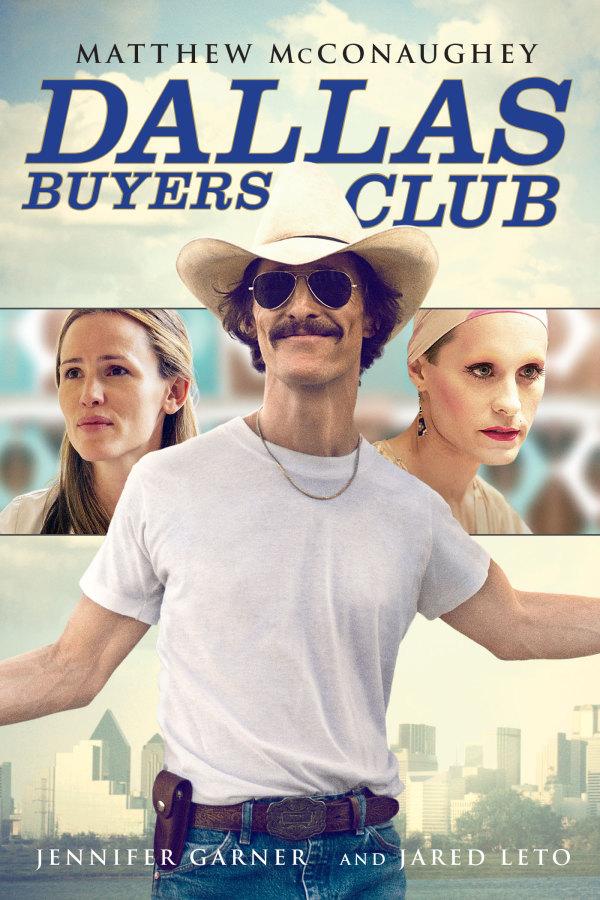In Honor of the One-Year Release Anniversary of Dallas Buyers Club
September 22, 2014
“AIDS! It’ll never happen to me!” thought Ron Woodroof even as his doctor revealed to him he had HIV and thirty days to live.
For people interested in the U.S. AIDS crisis and an ensuing story of moral growth, Dallas Buyers Club, released almost a year ago on November 22, 2013, is a fitting movie. It’s rated R for adult material and drug use, but director Jean-Marc Vallée’s delicate portrayal of these behaviors in relation to the transmission of HIV presents a more qualified perspective than the media’s general celebration of the modern “YOLO” partying mentality. Matthew McCanaughey and Jared Leto respectively star as lanky Ron Woodroof, a homophobic electrician and rodeo-lover-turned-AIDS-rights-fighter, and Rayon, a spirited transgender patient who helps Woodroof distribute experimental drugs to other patients. Both actors received Oscars for their performances, and the movie itself received a nomination for Best Picture. Abrupt transitions and a driving curiosity to know what’s going on will keep you entertained.
In addition to commenting on feminism and gay rights, the film mentions the conflict between conventional and alternative medicine in its criticism of AZT, the only FDA-approved medication for AIDS but ineffective in the long term. After a near-death experience on his 28th day after diagnosis due to AZT, Woodroof relies on the advice of an unlicensed doctor in Mexico to set his health back in order; the doctor orders the dying party animal to cut out drugs and alcohol, drop AZT, restore his immune system with a healthy diet, and take unapproved medications with promising research for symptom control. The ethical conflict in the film is manifest in modern society: should we provide federally-unapproved drugs to dying people at the expense of rigorous research about their efficacy and safety?
Like another AIDS-focused film produced by HBO in 1993, And the Band Played On, Dallas exhibits how the social perception of HIV transitions from stigma to acceptance. Moreover, both films express the government’s inability to react quickly to the crisis as well as controversy in the medical industry: Dallas depicts the pharmaceutical industry as corrupt, taking advantage of desperate, dying patients, while And the Band Played On addresses a famed doctor’s stolen claim over the discovery of the AIDS virus. Both films include a doctor strongly sympathetic to AIDS victims, thus presenting a personal, human view of the medical profession that contrasts with the coldness of pharmaceutical companies and government agencies; however, one focuses more on the doctor’s efforts to make sense of the crisis, while the other focuses more on the disease’s psychological impact on victims. In their conclusions, each movie displays dramatically simple black and white slides listing the fates of Ron Woodroof and other victims of AIDS, showing that words can sometimes express more than pictures.
Over 17? Get a copy of Dallas Buyers Club (as well as And the Band Played On) from the library, or stream it on Netflix. It’s an excellent reflection of current social and medical issues for the informed Magnet student.














